The First Series (1926)
The first series we're printed in 1926 in 5, 10, 20, 50 and 100 pengo" denominations. These we're designed by Ferenc Helbing, Hungarian graphic artist. Due to the usage of poor printing technology (offset printing) these we're widely faked. This would cause them to be replaced by a new series just a year later with the last of these issues being withdrawn in 1935. Since these notes still represented a fairly large amount of money, they are relatively rare among collectors. Interestingly, some of the later pengo" series would have a similar design to these First Series issues since the designs of the printing plates would be reused.
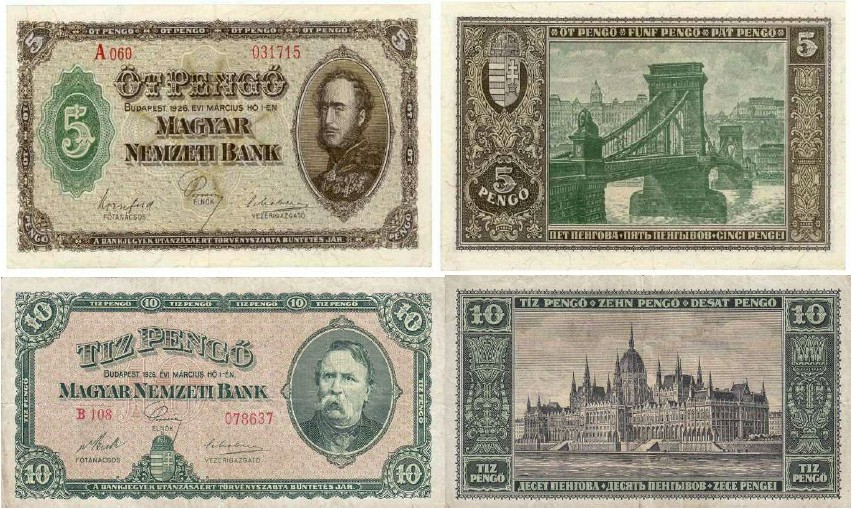
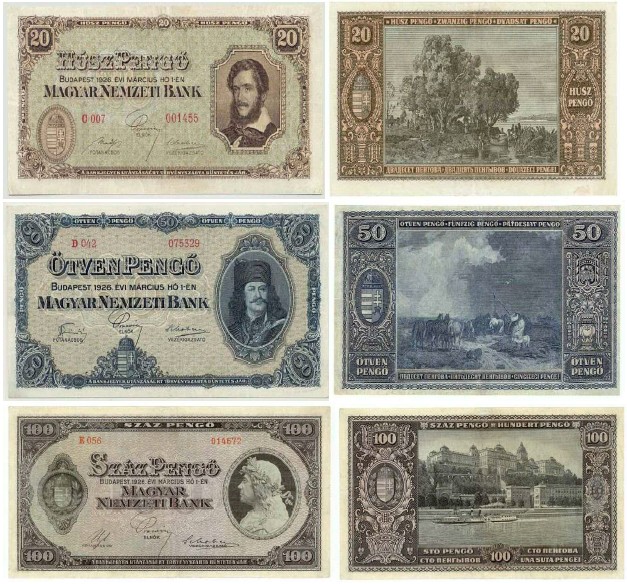
9.. The obverse and reverse of First Series 5, 10, 20, 50 and 100 pengo" banknotes in order. Source: By Salandr - Own work,
CC BY-SA 4.0, https://commons.wikimedia.org/w/index.php?curid=169082275
The Second Series (1927-1932)
The first issue of this series was the 1000 pengo" banknote, designed by the Hungarian currency designer Zoltán Egri (some sources mention his name as Egry). Both the 1000 pengo" and the later pengo" notes we're made using intaglio printing. The other denominations we're 5, 10, 20, 100 and the latest 50 pengo" banknotes, which we're designed by Álmos Jaschik, Hungarian graphic designer and painter. The 5 pengo" banknote would be replaced by a 5 pengo" silver coin only 2 years after it was issued, due to this, the 5 pengo" notes are somewhat scarcer. Another scarcer banknote from this series is the 10 pengo" banknote, whose design would be replaced before the war.

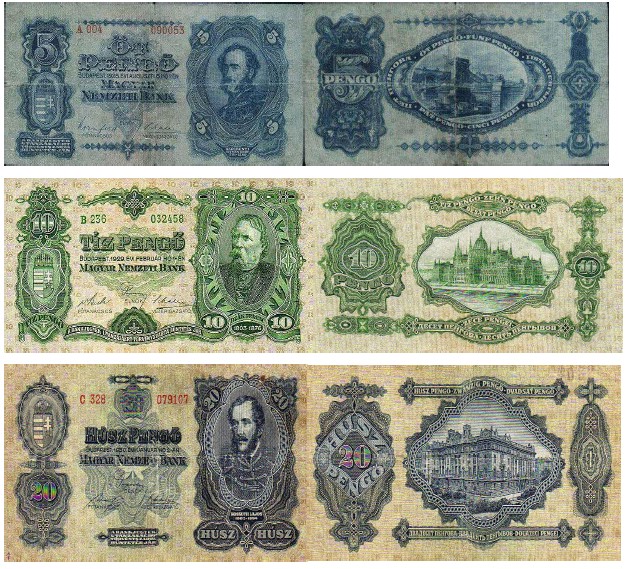
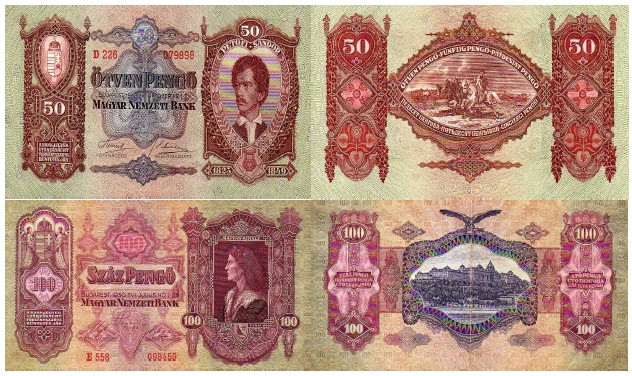

10. The obverse and reverse of Second Series 5, 10, 20, 50, 100 pengo" banknotes.
Low denomination Series (1938)
As a result of the First Vienna Award in 1938, Hungary was awarded control over territories in todays Southern Slovakia (Czechoslovakia at the time). The purpose of these banknotes was to provide small change in the newly gained territories. The reason for issuing small change in banknotes instead of coins was mainly due to the fact that there was already a lack of coinage in the country even before the annexation. A second reason that might have influenced such a decision to issue small change in banknotes might have been that the government was already preparing for the potential of future conflict and did not want to issue surplus coinage to prevent the hoarding of higher value silver coins by the populace and to conserve material that would be important for the war industry in an upcoming conflict.
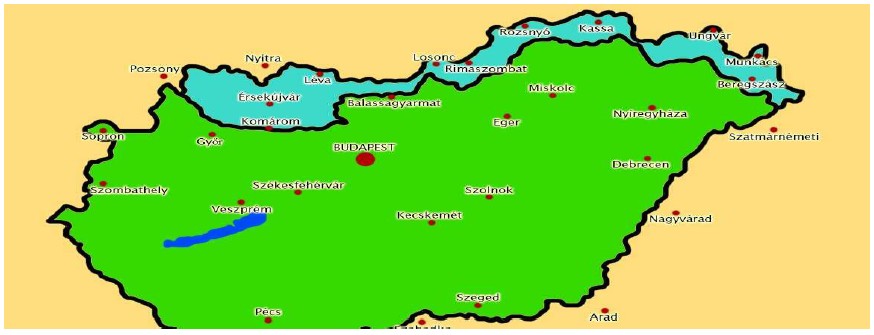
11. The territories gained in the First Vienna award, marked with blue.
The series was designed by Franke Ruppert, Austrian graphic designer and engraver who previously worked at the Austro-Hungarian National bank before it was liquidated. It was issued in denominations of 50 fillér (the small change of the pengo"), 1 pengo" (in 2 issues, due to firs one having been badly designed so it couldn't hold too many serial numbers), 2 pengo" and 5 pengo". The series is quite scarce, as only the 1 and 5 peng's we're put into circulation, for the rest, they only exist as printer proofs.
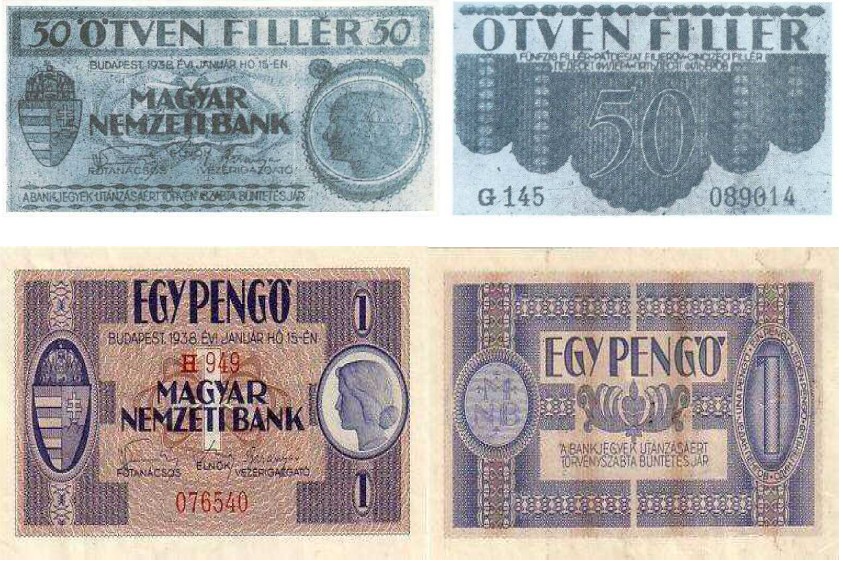
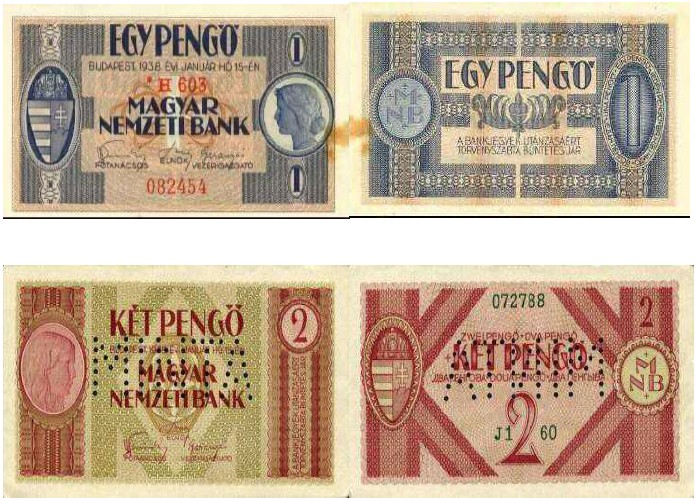

12. Banknotes of the Low denomination series in order: 50 fillér, 1 pengo" (1st issue), 1 pengo" (2nd issue), 2 pengo", 5 pengo".
Source: By Magyar Nemzeti Bank (Hungarian National Bank) - scan of an obsolete banknote, CC BY-SA 3.0,
https://commons.wikimedia.org/w/index.php?curid=1107488
War series /Pre-war series (1936-1941)
The first banknote of this series was the 10 pengo" note printed in 1936, but only put into circulation in 1939. The denominatios of this series is 2, 5, 10, 20 and 100 pengo" banknotes, with the 100 pengo" notes having been only issued to pay evacuated Austrian troops. The notes we're designed by Endre Horváth, a Hungarian graphic artist who would later also design banknotes for the Hungarian Forint which would replace the pengo" and continues to serve as the currency of Hungary today. Endre Horváth sought to include motifs from folk art in the newly issued notes, with the design of the 20 pengo" being considered one of his best
works. It was during this period that the pengo" displayed the first signs of the later hyperinflation which would later doom the pengo". The catalyst of this was the Gyo"r Programme, a rearmament program similar to the one conducted by Germany in the pre-war years. The Gyo"r Programme was envisioned by rhe Hungarian Chief of General Staff, Jeno" Rátz in 1937. He called for a 5 year long rearmament plan which required 1 billion 700 pengo"s in funds, which was about 3 years of annual revenue for the country. The plan would be approved and implemented by Kálmán Darányi, the Hungarian prime minister from 1936 to 1938. Although the plan was implemented with a considerably decreased budget (1 billion pengo"s), it was still an enormous investment, which required considerable amount of extra funds which was planned be acquired partially through loans (40% of the funds) and greater taxation (60% of the funds. Such a plan had two main issues:
- the collection of the taxes
- and the repayment of loans.
As such, due to the difficulty of acquring the needed funds through conventional methods, the government turned to printing money in order to fund the program, noticeably increasing inflation, but not quite to the extent of the late and post war period.
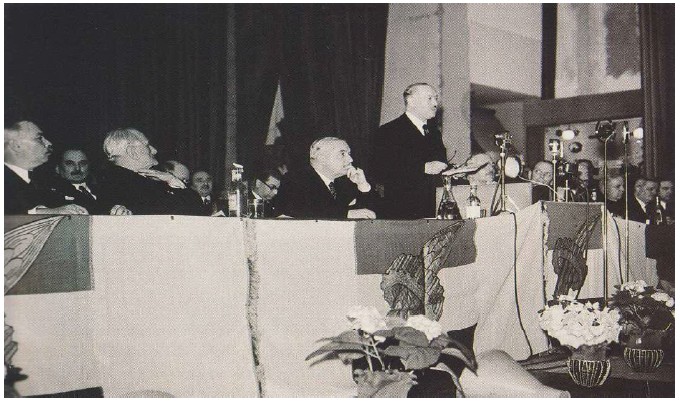
13. Prime Minister Darányi Kálmán announcing the Gyo"r Programme-March 5th 1938 Source: Készítette: MFI/Magyar Film
Iroda - Izsák-Pölöskei-Romsics-Urbán: Magyar miniszterelnökök 1848-2002. Kossuth Kiadó, Budapest, 2003. p. 111.
(image) and p. 227. (register), Közkincs, https://commons.wikimedia.org/w/index.php?curid=39389728
The program itself was a major success, with it being implemented from March 1938 to the second half of 1939, however it still displayed the willingness of the government to use such inflationary policies in order to fund it's workings.
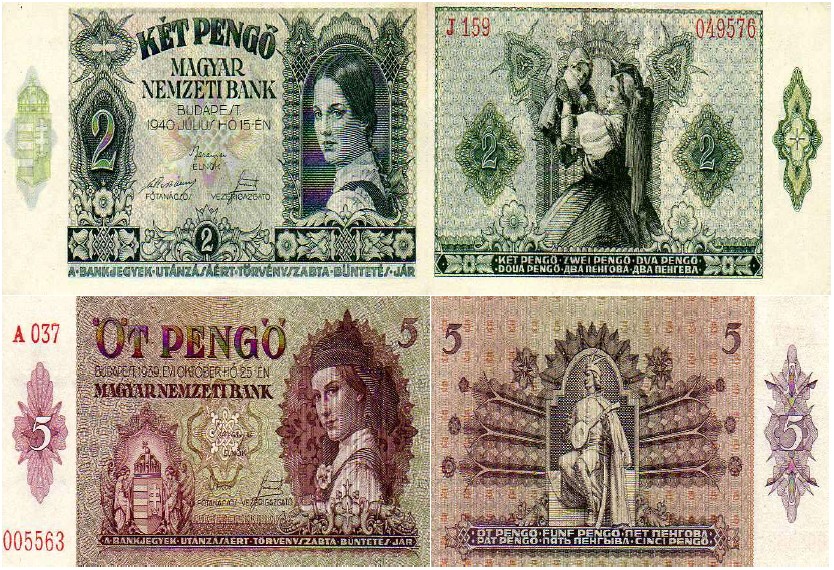
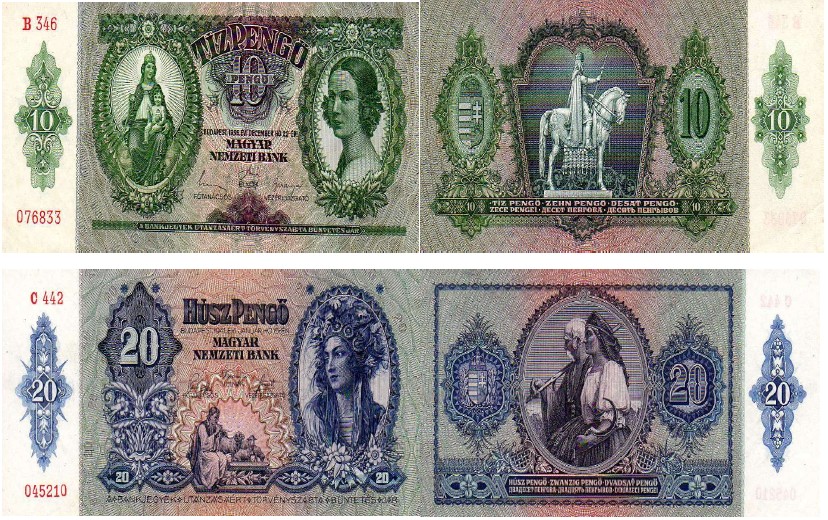
14. The banknotes of the War Series in order of: 2, 5, 10 and 20 pengo"s. Source: By Magyar Nemzeti Bank (Hungarian
National Bank) - own scan of an obsolete banknote Timur lenk 2006, CC BY-SA 3.0,
https://commons.wikimedia.org/w/index.php?curid=977673
